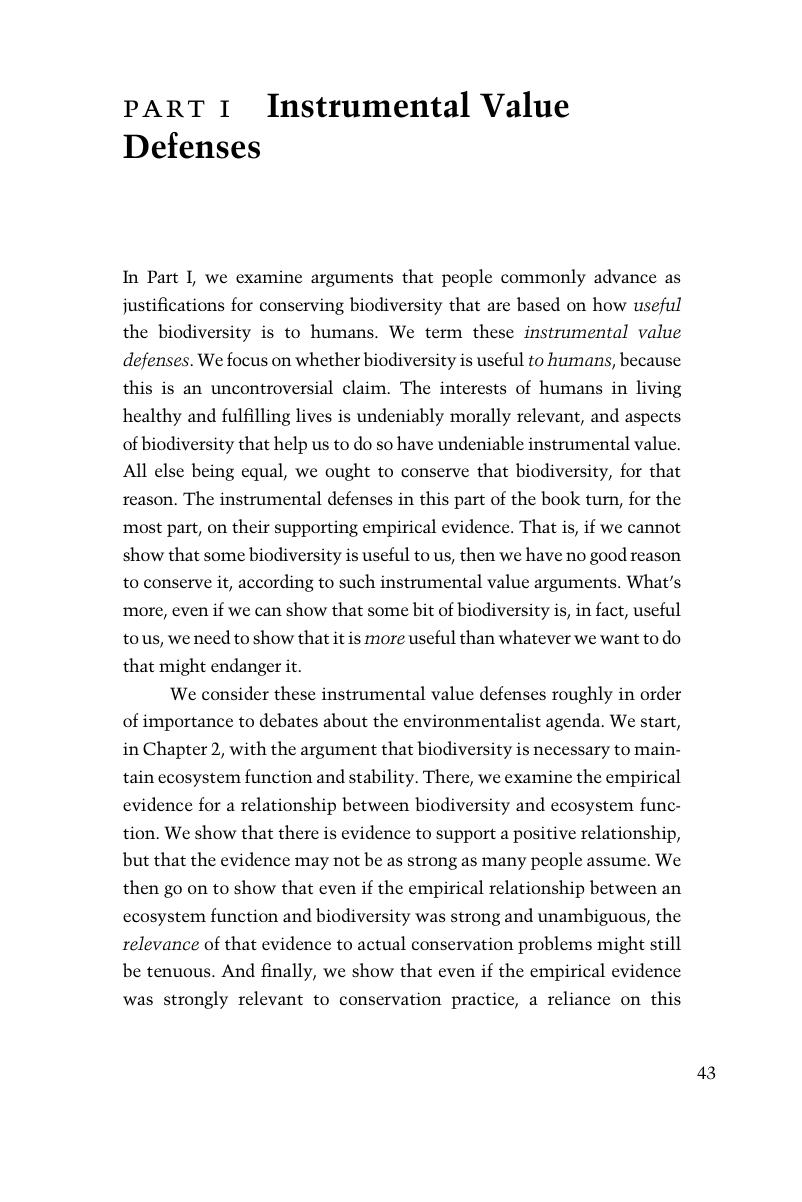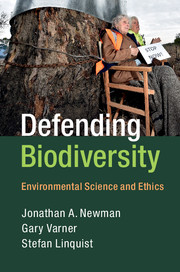Part I - Instrumental Value Defenses
Published online by Cambridge University Press: 06 October 2017
Summary

- Type
- Chapter
- Information
- Defending BiodiversityEnvironmental Science and Ethics, pp. 43 - 204Publisher: Cambridge University PressPrint publication year: 2017



